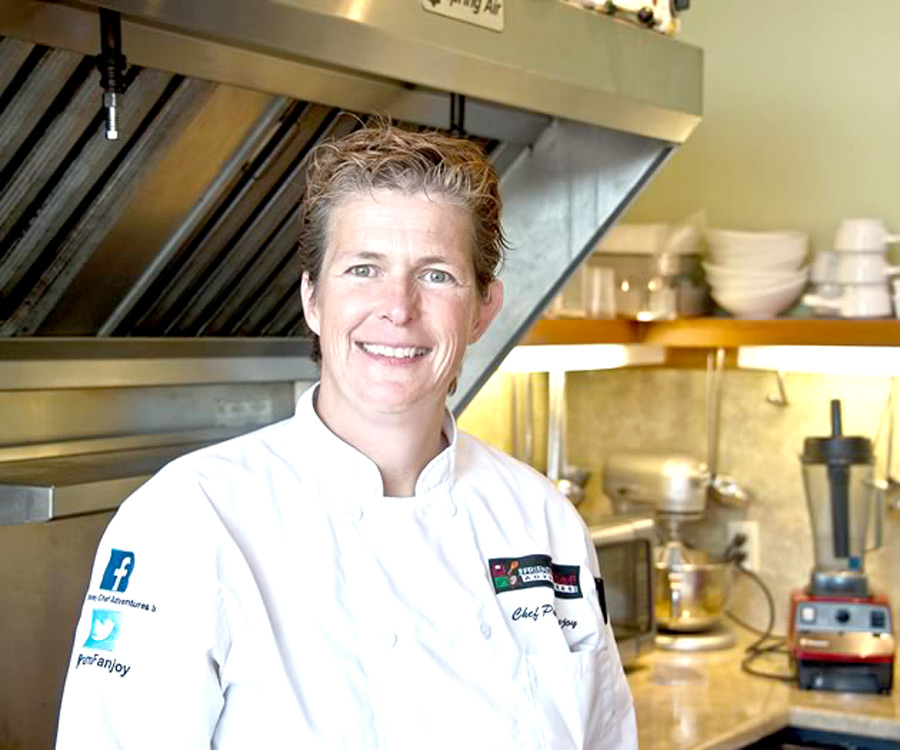HILLSBURGH – Chef Pam Fanjoy is finding her unique skill set – being both a chef and a family therapist – is coming in handy as she attempts to counsel families through cooking.
“I had been trying to articulate the therapeutic benefits of cooking and decided in December to evolve the junior chef program. There were logistical issues, however,” she said in an interview on May 25.
But since the coronavirus and its accompanying fear and anxiety, “kids are in need right now. So, I decided to take the program online.”
Fanjoy has found that families who may have difficulty communicating with each other at home or even in traditional therapy sessions somehow manage to connect in the kitchen.
She recalled the first family with which she used culinary therapy and she was both pleased and surprised by the result. The 15-year-old boy was attending therapy sessions in her office, but his parents refused to come along.
So she invited the family into her kitchen to cook, “and they were able to talk in a less threatening environment. They learned the skill of cooking and also talked about their problems.”
Fanjoy had been offering March Break and summer cooking camps for kids at her restaurant in Hillsburgh – her junior chef program – but they have been cancelled due to COVID-19. And yet COVID-19 is causing anxiety and depression and isolation, and that can be overwhelming for anyone – but especially for young people, Fanjoy said.
Her online program walks a family through meal preparation and touches on those underlying fears. Sessions can be one-on-one or up to 10 families can take part via zoom.
“Our mental health is directly connected to our physical health. Food is a common denominator for all of us – we all need to eat,” she said.
“Now with social isolation, we have a great opportunity to come back together around the dining room table for family meal times. This feeds our connection with one another, which also improves our mental health.”
Even if you don’t think you need therapy, there are benefits for families who cook and eat together. Fanjoy offers these six ways to feed connection with food during the crisis:
1. Eat meals together. Whether it’s breakfast, lunch or dinner, eating together brings us closer, physically and emotionally. It sets the table for connection.
2. Create new family food rituals. Rituals create predictability and comfort, especially during crisis. Healthy, economical meals can become a fun-themed dinner that children look forward to every week, such as Spaghetti-Sundays or Taco-Tuesdays.
3. Include your child in preparing and cooking meals. Many life lessons can be taught at home in the kitchen. Not only will children learn the practical skills of cooking, but they will also learn how to cooperate, problem solve, develop patience as you create a meal together.
4. Put your cell phones and screens away during mealtimes. This simple gesture invites conversation and brings back fun to family mealtime.
5. Create a self-serve snack zone that gives your kids more control over their own eating choices. Don’t get into a power struggle with your children and teens about what and when to eat. Instead, choose a spot to put healthy snacks, so they can simply help themselves when they feel hungry. Just restock the bin each night.
6. Use meal times as a time to learn more about the highs and lows of your child’s day and share your own. Often, this will lead to more sharing.
For more information or to register for a class, visit chefpamfanjoy.com.




